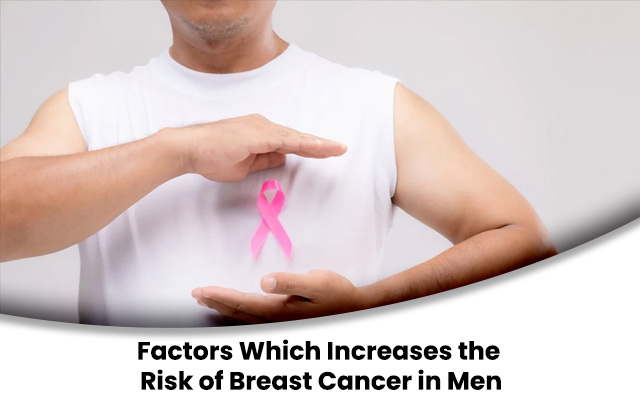When we think of breast cancer, it’s often considered a women’s disease, but men can also be affected. Although breast cancer in men is less common, it’s important to understand the risk factors that may contribute to it. By being aware of these factors, men can be proactive in recognizing potential symptoms early and seeking timely treatment. Here’s what you need to know about what might increase the risk of breast cancer for men.
Age
Just like in women, the risk of breast cancer for men increases with age. Most cases are diagnosed in men between the ages of 60 and 70. As men grow older, they should be mindful of any unusual changes in their chest area and consult a doctor if they notice anything unusual.
Family History and Genetics
A family history of breast cancer, particularly if close relatives (male or female) have had the disease, can increase a man’s risk. Certain genetic mutations, especially in the BRCA1 and BRCA2 genes, significantly raise the risk of breast cancer for men. Men with these genetic mutations are more likely to develop breast cancer, and they may also have a higher risk of prostate cancer. Genetic testing can help men understand their risk and take preventive steps if necessary.
Hormonal Imbalances
Men have a small amount of estrogen, the hormone primarily found in women. However, when there is an imbalance, and estrogen levels are higher than usual, the risk of breast cancer increases. Conditions like obesity, liver disease, or certain medications can lead to higher estrogen levels. Monitoring hormonal health and managing weight can help reduce this risk factor.
Klinefelter Syndrome
Klinefelter syndrome is a genetic condition in which men are born with an extra X chromosome, leading to higher levels of estrogen and lower levels of testosterone. Men with Klinefelter syndrome have a significantly higher risk of breast cancer for men. If diagnosed with this condition, it’s beneficial to talk to a doctor about regular screenings for breast cancer.
Obesity
Obesity is a common risk factor for many health issues, including breast cancer for men. Excess body fat can increase estrogen levels, which in turn raises the risk of breast cancer. Maintaining a healthy weight through regular exercise and a balanced diet can reduce this risk and support overall well-being.
Radiation Exposure
Previous exposure to radiation, especially to the chest area, can increase a man’s risk of developing breast cancer. Men who have undergone radiation therapy for conditions like lymphoma should be mindful of any changes in their breast tissue, as they may be at a higher risk for breast cancer.
Alcohol Consumption
High alcohol intake is associated with an increased risk of breast cancer in both men and women. Alcohol can raise estrogen levels, contributing to a higher risk. Limiting alcohol intake can help in reducing this risk and promote better health overall.
Recognizing the Symptoms
While the above factors increase the risk, being aware of the symptoms can make a huge difference. Signs to watch out for include lumps in the breast tissue, changes in breast shape, skin dimpling, or discharge from the nipple. If you notice any of these symptoms, it’s essential to consult a doctor immediately.
Although breast cancer is rare in men, understanding the risk factors can help with early detection and better prevention. If you or a loved one have any of these risk factors, staying informed and proactive is key. Remember, breast cancer for men is treatable, especially when detected early, and the right steps can make a significant difference.


